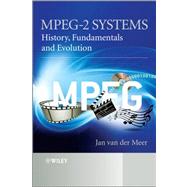This book describes the fundamentals and details of MPEG-2 Systems technology
Written by an expert in the field, this book examines the MPEG-2 system specification as developed in the early 1990’s, as well as its evolution into the fourth edition of the MPEG-2 systems standard, published in 2013. While MPEG-2 systems will continue to evolve further, this book describes the MPEG-2 system functionality as of October 2013. Furthermore, relevant background information is provided. The discussion of MPEG-2 system functionality requires knowledge of various fundamental issues, such as timing, and supported content formats. Therefore also some basic information on video and audio coding is provided, including their evolution. Also other content formats supported in MPEG-2 systems are described, as far as needed to understand MPEG-2 systems.
- Ordered logically working from the basics and background through to the details and fundamentals of MPEG-2 transport streams and program streams
- Explores important issues within the standardization process itself
- Puts the developments on MPEG-2 systems into historic perspective
- Includes support of 3D Video and transport of AVC, SVC and MVC
- Concludes with additional issues such as real-time interface, delivery over IP networks and usage by application standardization bodies
- Predicts a continuing promising future for MPEG-2 transport streams








